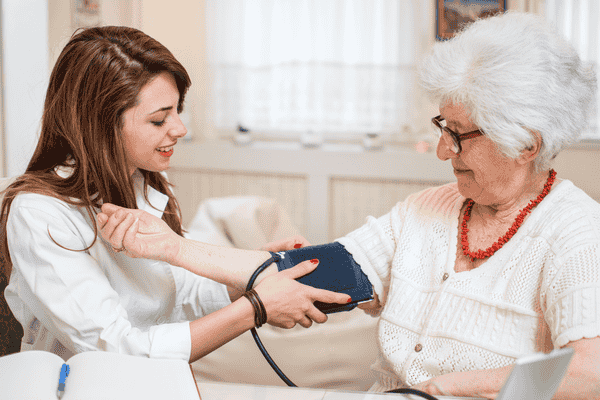“Stepping into a client’s home for the first time is more than just arriving at a job—it’s the beginning of a relationship. The way you prepare, engage, and provide care shapes the client’s comfort, trust, and overall well-being.”
Providing care in a home setting is deeply personal. Unlike a hospital or care facility, where systems and protocols are well-established, home care requires adaptability, strong communication skills, and a keen sense of observation. Independent caregivers, in particular, must take extra steps to ensure a smooth and professional experience, as they do not always have the structured support that agency caregivers receive.
A successful home visit begins before you even leave your house. By preparing thoroughly, making a strong first impression, and delivering personalized, respectful care, you can build a meaningful connection with your client while ensuring their needs are met effectively. This guide will walk you through the entire process—from pre-visit planning to post-visit reflection—so you can step into each caregiving role with confidence and compassion.
Preparing for a Home Visit: Setting Yourself Up for Success
A first visit should never be approached casually. Preparation is what separates a great caregiver from an average one. It ensures that you walk into the home equipped with the right information, tools, and mindset to provide care that is both effective and considerate. Since home environments vary greatly, taking the time to understand your client’s specific situation allows you to anticipate challenges and adapt accordingly.
Gathering Essential Information
Before your visit, take the time to familiarize yourself with the client’s background, needs, and preferences. If the client or their family has provided details about medical conditions, dietary restrictions, or mobility limitations, review them carefully. This allows you to arrive with a plan in mind rather than scrambling to gather information after you arrive.
If no prior information has been shared, initiate a conversation with the client or their family to discuss key details. Beyond basic care needs, consider asking about daily routines, favorite activities, and any cultural or religious preferences that might influence their comfort and well-being. A client who is used to a particular morning routine, for example, may find it unsettling if their schedule is suddenly disrupted. Understanding and respecting these details from the beginning fosters trust and helps you provide care in a way that aligns with the client’s lifestyle.
Preparing Important Documentation
Clients and their families may be understandably cautious when welcoming a new caregiver into their home. Bringing necessary documentation—such as caregiver certifications, CPR or First Aid training records, liability insurance information, and references—demonstrates professionalism and reliability. If you are working independently rather than through an agency, it may also be beneficial to provide a signed care agreement that outlines expectations, responsibilities, and payment arrangements.
Having a system for documenting client interactions is equally important. Whether you use a notebook, an app, or a dedicated care log, keeping track of services provided, changes in the client’s condition, and any concerns that arise during your visits ensures clear communication and continuity of care.
Packing a Well-Stocked Caregiver Kit
A well-prepared caregiver brings more than just knowledge and experience; they also carry essential supplies to handle a variety of situations. Personal protective equipment such as gloves and hand sanitizer is crucial for maintaining hygiene, particularly when assisting with personal care tasks. Basic first aid items, such as bandages and antiseptic wipes, can be useful for minor injuries. Additionally, carrying a notebook for documentation, a portable phone charger, and a list of emergency contacts ensures that you are always prepared for unexpected situations.
If your client has pets, it may be helpful to ask in advance about any specific needs or allergies that might affect your care routine. Some caregivers also find it useful to carry small items—such as a crossword puzzle book or a deck of cards—that can be used for engagement and companionship, particularly if the client enjoys mental stimulation activities.
Understanding the Home Environment and Logistics
A smooth home visit starts with proper logistical planning. Mapping out the route to the client’s home in advance, checking for potential travel delays, and ensuring that you have the correct address and entry instructions can prevent unnecessary stress. If you are driving, it is also important to consider parking availability and any expenses that may need to be factored into your budget.
Beyond logistics, preparing for potential environmental challenges can make your visit more effective. Some homes may have tripping hazards, dim lighting, or other safety concerns that need to be addressed. If possible, plan to conduct a quick home safety assessment upon arrival to identify and mitigate any risks that could impact the client’s well-being.
Arriving at the Client’s Home: Making a Strong First Impression
First impressions matter. The way you introduce yourself and interact during the initial moments of a visit sets the tone for the entire caregiver-client relationship. Many clients, particularly those who are elderly or living with chronic health conditions, may feel vulnerable when receiving care. Approaching them with warmth, patience, and a reassuring demeanor helps ease any anxieties they may have.
When you arrive, take a moment to observe the client’s body language and environment. If they appear hesitant or withdrawn, consider starting with light conversation to build rapport before jumping into care tasks. Something as simple as commenting on a family photo or asking about their favorite book can create an immediate connection. At the same time, it is important to respect their comfort level—some clients may prefer a quiet approach rather than extensive conversation.
Offering a clear, friendly introduction is also crucial. A simple greeting like, “Hi, Ms. Johnson! My name is Anna, and I’ll be here to help you today. How are you feeling?” acknowledges the client as an individual rather than just a task to be completed. This small gesture can make a significant difference in how comfortable they feel with your presence.
Providing Quality Care: Balancing Professionalism with Compassion
Once inside the home, your role extends beyond completing tasks—you are there to provide support in a way that maintains the client’s dignity, autonomy, and overall well-being. This requires a balance of professionalism and genuine human connection.
Assisting with Personal Care in a Respectful Manner
Helping a client with bathing, dressing, or toileting can be an intimate and sometimes uncomfortable experience for them. Always explain what you are about to do before beginning any personal care task. Offering choices, such as selecting between two clothing options or asking if they would prefer a morning or afternoon shower, gives them a sense of control over their routine.
Whenever possible, encourage the client to do as much as they can independently. For example, instead of fully dressing them, assist only with buttons or zippers if they are able to manage the rest. This approach helps maintain their self-esteem and promotes a sense of independence.
Providing Household and Meal Support
Home visits often involve light housekeeping and meal preparation, but these tasks should be approached with the client’s preferences in mind. If they have specific dietary restrictions, follow their guidelines carefully. Some individuals may have strong attachments to the way things are done in their home, such as a particular way of folding laundry or arranging kitchen items. Taking the time to honor these small details shows respect for their space and routine.
Ending the Visit: Leaving on a Positive Note
As the visit comes to an end, ensure that the client is comfortable and that all necessary tasks have been completed. Before leaving, check that they have access to essentials like water, medications, and personal items. A brief summary of the visit, such as “We had lunch, took a short walk, and I tidied up the living room”, provides reassurance that their needs have been met.
Finally, confirm the next scheduled visit and offer a warm farewell. Something as simple as “I’ll see you on Wednesday! Let me know if there’s anything special you’d like me to bring.” creates a sense of continuity and reassurance.
Final Thoughts: The Art of Thoughtful Caregiving
A well-prepared caregiver is more than just a service provider—they are a source of comfort, stability, and trust. By approaching each visit with professionalism, empathy, and attention to detail, you not only improve your client’s quality of life but also build a rewarding and meaningful career in caregiving.
“Caregiving is not just about what you do—it’s about how you make someone feel. And that starts with the very first visit.”





